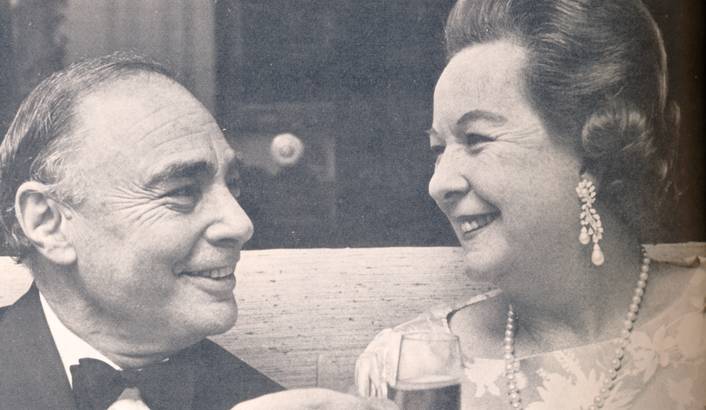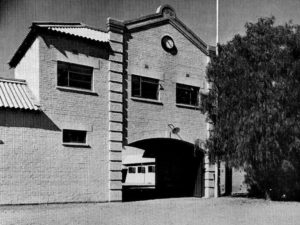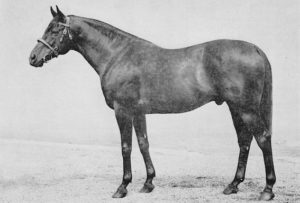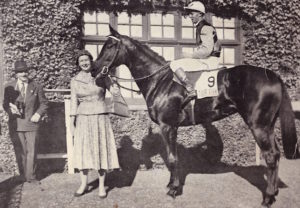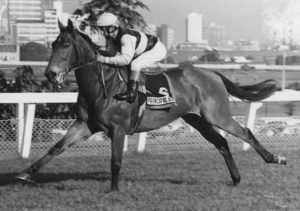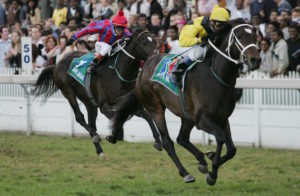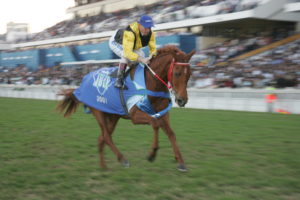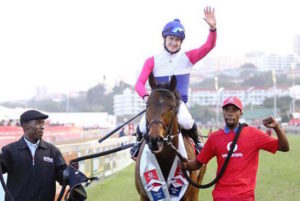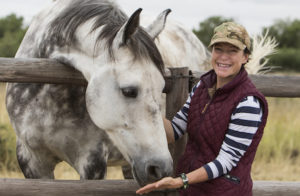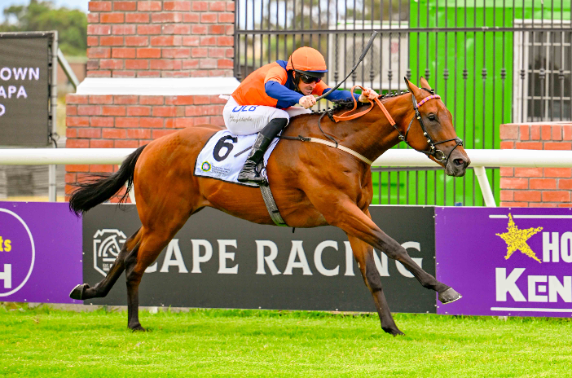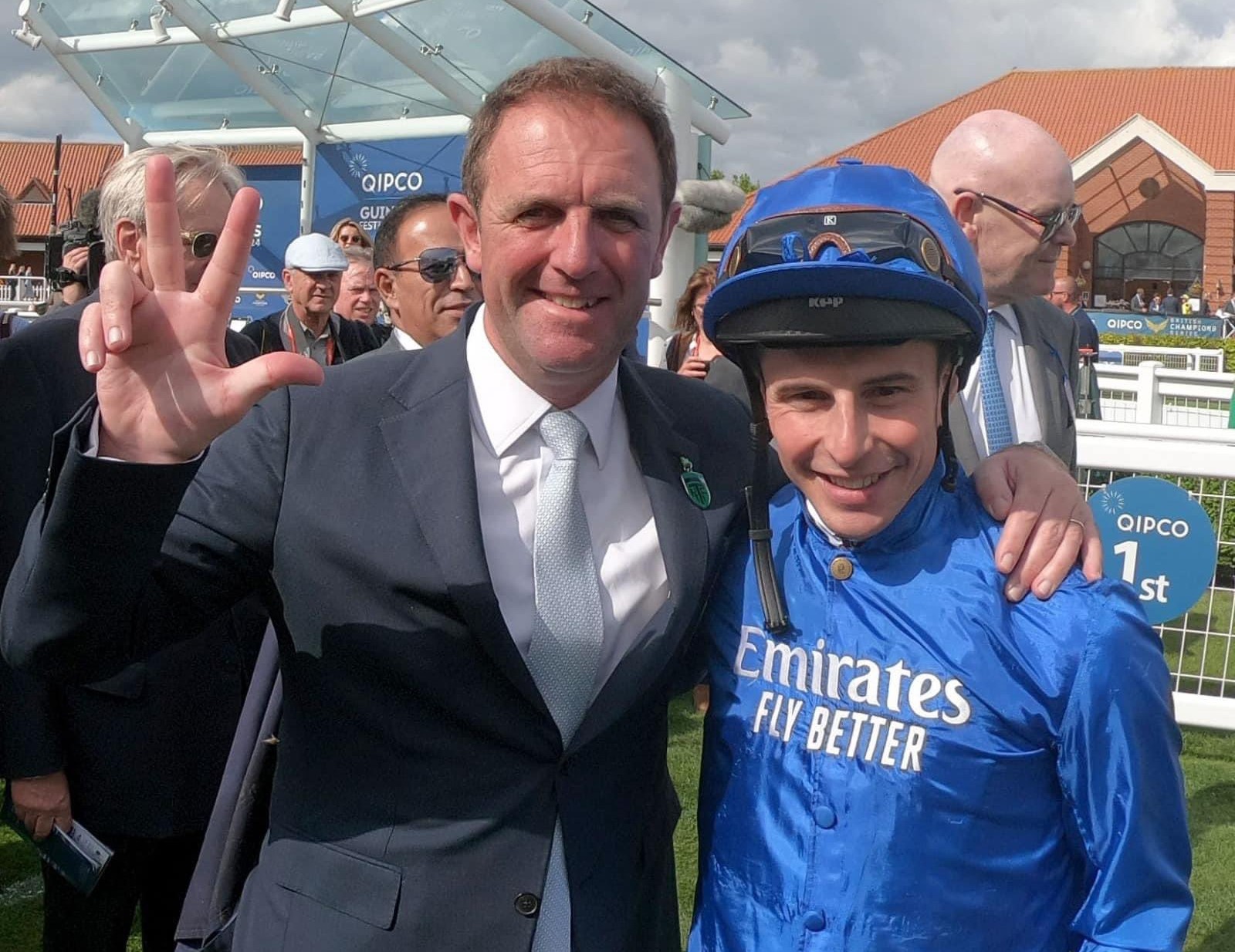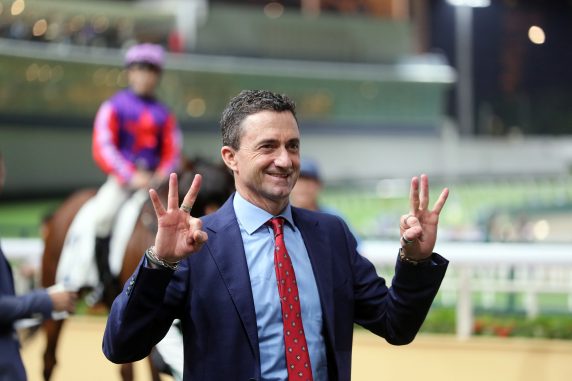One could write a book about the Oppenheimers and their contribution to racing, but a new chapter was added when Marinaresco flew from the clouds to victory in this year’s Vodacom Durban July, delivering Mauritzfontein’s 6th July winner and continuing Harry and Bridget’s 71 year heritage of classic excellence.
While current fans will associate the Kimberley nursery with Fort Wood and the mighty Horse Chestnut, their legacy runs far deeper. Charles Faull and the ARO Foal Report helped me uncover the meaning of Mauritzfontein.
Harry Oppenheimer started a small Thoroughbred stud on the famous De Beers remount depot outside Kimberley in 1946 and its impact has been profound. Mr Oppenheimer was single minded in assembling his broodmare band, selecting Classic families and daughters of such breed-shapers as Hyperion, Ribot and Princequillo.
The original complement of eighteen handpicked matrons consisted of nine SA-breds and nine imports, including the blue blooded Lorelei (Hyperion) in foal to Scottish Union (St Leger). The resultant foal, Ossian, was given to Sir Ernest, for whom he romped home in the 1950 Summer Handicap.
Finding a prepotent stallion or foundation mare is like trying to find a needle in a wheat field, but from those nine imported mares came two blue hens, both of which became the founders of dynasties. Their names – Fisherman’s Prayer (GB) and Sword Dance (GB).
Blue Hens
Fisherman’s Prayer created a great family, herself producing champions such as Red Roman and Mauritzfontein’s first July winner, Tiger Fish, and flourished through her daughters, Electric Eel (dam of SA Oaks winner Murena), and Rising Trout, who would produce Troutbeck, Truite Au Bleu (7 time winner and dam of SA Oaks winner, Free Style) and champions Hengist and King Willow, winner of the SA Derby, Champions Stakes and the Oppenheimers’ second July title in 1969.
While Harry & Bridget concentrated on Classic and stout blood, they did import two of the fastest fillies ever to race in SA. The first was Polybius, an American bred daughter of Mr Busher from a great Lord Derby family, and of course Nalatale. Polybius won the Garden Province, and defeated champion Jerez in the Chairman’s Plate. Nalatale was champion sprinting filly of SA and her main rival on the Rand at the time was another Mauritzfontein-bred, Uncle Ben. The two Mauritzfontein greys were involved in a number of close fights over 1000m. Nalatale gave us Bodrum and of course London Wall, by Mauritzfontein’s Col. Pickering (by their sensational sire Wilwyn, out of another of their blue hens, Julie Andrews, herself a dam of three Gr1 winners).
Oaks Legacy
Before discussing Mauritzfontein’s July winners, one has to make mention of their extraordinary achievements in the SA Oaks. They first won it in 1962 with Dame de Coeur (Janus – No Deal) – from two other Mauritzfontein-breds, Pafuri and The Widow. They won it again in 1963 with Baccarat, a full sister to Dame de Coeur, and have won it a total of 14 times to date. Mauritzfontein’s classic stallion Free Ride (Timeform 129) bred five SA Oaks winners – Angelina, Free Style (SA and Natal Oaks), Murena (winner of the 1972 SA Oaks beating Switched On and Hula Queen, all Mauritzfontein-bred and all by Free Ride), Vicereine, Grease Paint (out of SA Oaks winner Julie Andrews by Shantung); and Free Ride also bred Natal Oaks winner With Pleasure (out of Willingly by Wilwyn) as well as Bodrum and Principal Boy.
The Sensational Wilwyn
Mauritzfontein imported Wilwyn in 1959. Timeform 129, he’d been at stud in England for five years showing great promise, but his success in SA was profound. An abbreviated list of his Gr1 winners, all of whom were bred by Mauritzfontein, include full brothers Kimberley Kid, Willett and Stalwart, July winner King Willow, Rarin To Go (SA Nursery) and Gold Cup winner Smash And Grab. His 1965 crop delivered four Gr1 winners – Anchorage (Summer Handicap), Salaman (Hawaii Stakes), Stalwart (Hawaii Stakes) and Uncle Ben, champion sprinter of SA. Wilwyn’s last Gr1 winner was Col. Pickering, who won the Hawaii Stakes. From only 230 SA-bred foals, Wilwyn produced 32 stakes winners, a staggering ratio of 14%.
And this is just a fraction of what Mauritzfontein accomplished for Harry & Bridget.
July Triumphs
1. Tiger Fish (Janus – Fisherman’s Prayer) was their first July winner in 1959. He was champion 2yo, unbeaten in 4 starts and champion 3yo with 5 wins and 3 seconds from 8 starts, including the Benoni Guineas, SA Derby, 2nd to the great 5yo Java in the Summer Handicap and touched off a short head by 4yo Excise in the Durban July Handicap of 1958. At 4, he was a close second to Black Pirate in the Newbury (1200m), won the Durban July under 124lbs by 2 ¼ lengths and finished 4th in the Durban Merchants a week later under 122 lbs. At 5 (a month after the July) he defeated a star studded field including Panjandrum, Riza and Black Pirate in the WFA 1400m Chairman’s Plate. He was a great horse.
2. King Willow (by Wilwyn out of Fisherman’s Prayer’s daughter Rising Trout), won four of five starts at 2, including the 1400m Champion Nursery Stakes, defeating Ajax and the Oppenheimer-bred Rarin To Go (also by Wilwyn) by nearly 3 lengths. At 3 he ran eight times for four wins, two seconds and two thirds. He opened with a crushing victory in the 1400m Durban Free Handicap, was third in a top division 1000m at Germiston, won the 1964 WFA SA Invitation Stakes from Panakush, Numeral and Ptolemy (on the same day that Julie Andrews won the SA Oaks), won the SA Derby by 3.5 lengths, was 2nd in a 1000m sprint at Germiston touched off a head by a 4yo, ran second to Fire Eyes in the Cape Derby, finished third to William Penn in the SA Guineas and then won the 1965 Durban July under 106lbs by a head from the 4yo Fair Mountain (who went on to win the Queen’s Plate). From five starts at 4, he placed three times including running second to Sea Cottage in the Clairwood Winter Handicap by half a length in receipt of 7lbs and interestingly, four lengths fourth to Wilwyn’s son Smash And Grab under top weight of 126lbs in the Gold Cup. He opened his 5yo season with a sensational defeat of Java Head, Sea Cottage and Smash And Grab in the 10 furlong Champion Stakes on 6 August 1966. Like Tiger Fish, he was a serious racehorse, from 1000 – 3000m.
3. Principal Boy was a true Mauritzfontein product by Free Ride out of SA Oaks winner Julie Andrews (SNL) (who also produced Col Pickering, and SA Oaks winner, Grease Paint). Her dam, Eliza Doolittle, by Epsom Derby winner and champion sire Never Say Die, was imported in foal in 1960. Besides Julie Andrews, Eliza Doolittle produced another SA Oaks winner, Little Audrey (High Veldt).
Principal Boy won the 1975 July on the disqualification of Gatecrasher. As a 5yo gelding he carried 49kgs to 3yo Gatecrasher’s 49.5kgs, meaning he met Gatecrasher on 8lbs better terms than WFA and finished a head behind him. It was a top class run against an all-time great. He went on as a 6yo to win the 3200m Transvaal Handicap and the 1600m Charles Marx Memorial.
4. July winner number four comes in the form of Greys Inn whose USA moniker is something of a misnomer. Bridget Oppenheimer purchased his dam, Great Verdict (AUS) in foal to NZ sire Zabeel and sent her to the USA to be covered by Horse Chestnut. Thus Greys Inn was born in Kentucky, earning him a (USA) suffix. Great Verdict arrived in SA with Greys Inn at foot and carrying Good Judgement, who was unraced but went on to breed the champion Smart Call. Unraced at 2, Greys Inn went into the July as a winner of four of seven starts, including the SA Classic and the SA Derby, and was therefore well handicapped with 50kgs as a dual Gr1 winning 3yo. Ridden by Greyville grandmaster, Anthony Delpech, he romped home by almost 3 lengths. After the July, Greys Inn was shipped abroad, winning the 2400m Dubai City of Gold in Dubai and finishing eight lengths behind the great Makybe Diva in the Cox Plate, conceding her the 5lbs sex allowance – no mean feat. At stud he’s given us 2 good horses in King of Pain and Legal Eagle.
5. The 4yo Hunting Tower by Fort Wood won his eighth race when winning the 2007 July. As a 3yo, he showed top class potential by winning the Dingaans, the Gauteng Guineas and the SA Classic and was beaten less than a length by Elusive Fort in the Daily News. Trained by Charles Laird and ridden to victory by Anton Marcus, he carried 55kgs and had such as Pocket Power (58kgs) nearly half a length behind him in 4th place. From nine starts at 5 in SA, he confirmed his superior merit, when two lengths third to Pocket Power at level weights in the J&B Met. He then went on to a strenuous Dubai campaign until he was 10 years old, winning the Jaguar Trophy (1300m at Nad al Sheba) and a 2200m stakes race at Meydan.
6. July winner number six for Mauritzfontein (and number four for Silvano), Marinaresco (Silvano – Gay Fortuna (Fort Wood)) with 132 lbs, carried the highest weight to victory in the July since it was converted to a 2000m race in 1915. Using exactly the same tactics as Grant van Niekerk in 2016, he was finessed to the back of the field by Bernard Fayd’herbe and swept all aside with his customary spectacular late acceleration. Like Nightingale (also out of a Fort Wood mare) he is a perfect example of the Silvano Classic / Stout type discussed under the Jacobs article last week and, like Nightingale, was having his first start at an appropriate distance since he reached maturity in about March this year. As we have seen, these Classic / Stout horses are capable of showing ‘fresh speed’, but once fully mature and fully fit, simply need more than 2000m to deliver the brilliance that we saw in the Queen’s Plate, Met and Gold Challenge.
Our anti–classic racing programme certainly does nothing to advance the cause of the classic horse or the punter, who can only make value judgements on horses over their right distances. SA’s woefully inadequate provision for the Classic/Stout pedigree in its racing programme needs to be addressed by those with the future interests of our stud book at heart.
Continuing Legacy
Harry and Bridget’s stated goal was to breed the Classic horse – a sentiment echoed by their daughter, Mary Slack at her Wilgerbosdrift nursery – and our history books stand testament to their towering achievements. Mauritzfontein goes into the future with Harry and Bridget’s granddaughter, with the help of a highly skilled team including Guy Murdoch, Nigel Page, et al. How lucky we are to have Jessica’s infectious enthusiasm for ‘the greatest game in town.’
Mauritzfontein’s greatest challenge will be to find another Wilwyn, as classic as they come and described by Timeform as the perfect racing machine. An interesting point about Wilwyn was that he was inbred to two daughters of the great Ascot Gold Cup winner, William The Third. Makes you think, doesn’t it?


